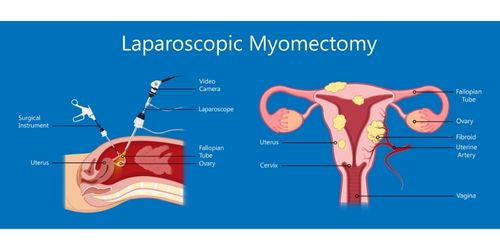Hysteroscopic Myomectomy
Hysteroscopic Myomectomy is a minimally invasive surgical procedure used to remove submucosal fibroids (myomas) from the uterus. These fibroids often cause heavy menstrual bleeding, infertility, or recurrent miscarriage. This procedure is performed using a hysteroscope — a thin, lighted tube inserted through the vagina — eliminating the need for external incisions.

What to Expect
Before the Procedure
- Pelvic ultrasound or MRI to assess fibroid size and location
- Fasting required if general anesthesia is used
- Blood work and general health screening
- Typically scheduled right after the menstrual period
During the Procedure
- A hysteroscope is gently inserted through the vagina and cervix
- Sterile fluid distends the uterus for a clear view
- The fibroid is visualized and removed using a resectoscope or morcellator
- Procedure typically lasts 30–60 minutes
After the Procedure
- Same-day discharge in most cases
- Mild cramping, spotting, or watery discharge for a few days
- Resume normal activities within 1–2 days
- Follow-up appointment to monitor healing and results

Benefits of Hysteroscopic Myomectomy
- Preserves the uterus — ideal for women wanting to conceive
- Improves symptoms like heavy bleeding and pelvic pain
- Minimally invasive with no abdominal cuts
- Quick recovery with lower infection risk
- Improves fertility outcomes for selected patients
Ideal Candidates
- Women diagnosed with submucosal fibroids (within uterine cavity)
- Experiencing heavy or prolonged periods
- Unexplained infertility or recurrent miscarriage
- Desiring uterine preservation for future fertility
Pre- and Post-Procedure Care
Before: You may be advised to take hormonal medications to shrink fibroids and thin the endometrium. Avoid sexual intercourse and vaginal medications 24–48 hours prior.
After: Expect light bleeding for a few days. Avoid tampons, douching, and intercourse for at least one week. Take prescribed pain relievers if needed. Report any severe pain, fever, or foul discharge to your doctor.
Testimonials
"My cycles were extremely heavy and exhausting. After the hysteroscopic myomectomy, everything changed — I feel normal again!" – Sneha A., 35
"I struggled with fertility issues for over a year. After fibroid removal, I finally conceived naturally. I’m forever thankful!" – Neha M., 32
Frequently Asked Questions
Is the procedure painful?
Most patients experience only mild discomfort. Anesthesia or sedation ensures comfort during the procedure.
How soon can I try to conceive?
Most women can start trying for pregnancy within 2–3 months after the procedure, depending on healing and doctor's advice.
Can fibroids grow back?
Fibroids may recur, especially if multiple fibroids are present. Regular follow-ups and hormonal balance can help reduce the risk.
How is it different from other myomectomies?
Hysteroscopic myomectomy is incision-free and targets fibroids inside the uterine cavity. Other types (laparoscopic or open) address larger or deeper fibroids.
Will I need hospitalization?
It is usually a day-care procedure with same-day discharge.
Contact Dr. Rainee Agrawal
Looking for gentle, effective fibroid removal with minimal downtime? Book your consultation today.
Contact Us+91 6265 125 460
Contact Person: Dr. Rainee Agrawal

